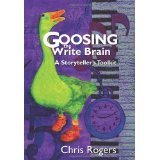Don’t Get It Right, Get It Written
Finishing one book, starting another requires a mind shift, especially when the new book is really different. Today I have 26,000 words of Paradise Cursed, a book I plan to publish by summer. So I’m on a tough deadline. Michael Hague, story consultant, author and lecturer for the screenwriting industry, is a strong proponent of getting the words down fast. So am I.
The faster we write and the less self-editing we do in the process, the more raw, gutsy, unselfconscious material we create. For novelists, screenwriters, and other storytellers, raw goop that comes from deep in the psyche is manna.
Ultimately, though, someone has to read that goop. That’s where revision comes in. I revised my first published novel, Bitch Factor, thirteen times before it saw print, not because I got it wrong the first time but because I didn’t get it as right as I wanted it to be. That’s okay. Revision is easy, compared to getting that rough first draft down on paper.
Here’s a simple five-step process that accelerates any type of creative writing, including narrative nonfiction and any sort of storytelling.
Down and Dirty
Program your logical mind for the format you need to fill. In other words, think briefly about what you’re writing, beginning, middle and end. The best way is to visualize the individual parts of the finished piece.
Here’s an example you already know, a simple letter format that’s been embedded in your memory since grade school:
Name and address of the recipient – Date – Salutation – Body of the letter – Complimentary close – Your signature.
Every finished piece of prose begins with such a format—even if it’s only roughly outlined in the writer’s mind—from a simple sentence (subject, verb) to a paragraph to a single “scene” in a story (character goal, conflict, reversal) to a complete novel or screenplay.
Immerse yourself in data. Take three to ten minutes to review the specific topic you’re writing about—any notes you might have, pages dog-eared in your favorite books, web sites, conversations with experts, periodicals. You might also read the opening of a successful story you’ve written previously or any favorite story that stirs your creative juices. During this ten minutes, you’re stuffing your brain with relative thoughts, facts, quotes, questions, and other tidbits.
Engage your creative mind. At the end of ten minutes, without notes, sit down and start writing. Just pour it out. If you’re using a pen and paper, keep the pen moving. If you use a keyboard, keep your fingers typing. Don’t stop to make corrections. Don’t look up words. Don’t puzzle over a fact. Don’t even scratch out a typo.
Simply write: fast and raw. Throw some passion into it.
Write for at least 20 minutes, not more than an hour. Then stop.
Take a hike. Leave the material for a while, say, ten to twenty minutes. Rake the yard. Fold clothes. Make breakfast. Call a friend. Think about anything except the material you’ve written. Let your subconscious work on it.
Revise gently. Read your rough draft and make any quick and easy fixes you see, but don’t over-analyze it at this point. It needs more time away from you. Tomorrow is soon enough.
To be a great storyteller, you have to write, write, and rewrite. Never expect a first draft to be perfect or you’ll be constantly frustrated. Frustration leads to constipation of the brain. Get something down on paper, something raw and fresh and impassioned.
Roll Out the Passion
Isak Dinesen once wrote, “All sorrows can be borne if you put them into a story or tell a story about them.” I can’t speak to the psychology of that statement, but I can say that any emotion—love, sorrow, anger, pride, curiosity, etc.—will create more interesting writing than the lifeless stuff that usually dribbles from the logical part of your brain.
So, whatever your topic, try to love it, hate it or get ticked off about it.
Try It Now
Story Units have various formats depending on their purpose, but for now let’s keep it simple: Beginning – Middle – End.
Your assignment is to write a few rough paragraphs—or more, if you’re on a roll—that involve:
Two characters, each with a goal and an emotion connected to that goal,
Interaction between the characters, preferably conflict, and
Resolution of some sort, either negative or positive.
Using the 5-Step process above, write it.
Don’t Get It Right…
Remember, only after an idea is out of the gray matter and onto the page, where it’s visible, can you tackle it from all sides and polish it until it squeals.
Get it written. Slap it down on the page fast. Then keep improving your draft with each rewrite.
 This is a painting I did using the same process.
This is a painting I did using the same process.  Goosing the Write Brain: A Storyteller’s Toolkit, available at: Amazon.com
Goosing the Write Brain: A Storyteller’s Toolkit, available at: Amazon.com



